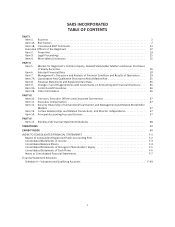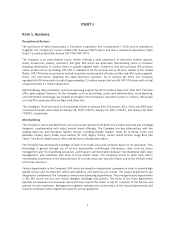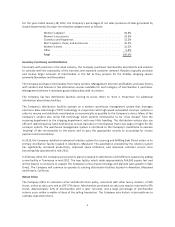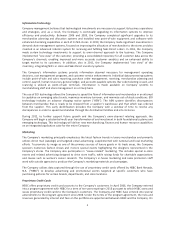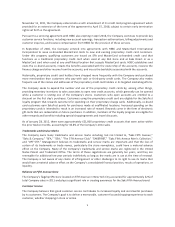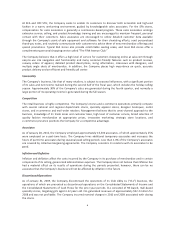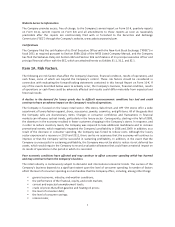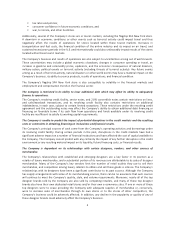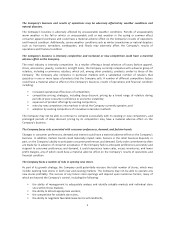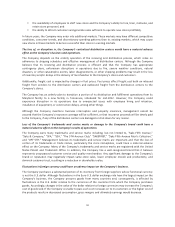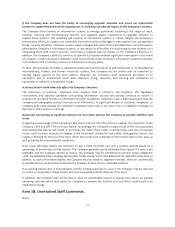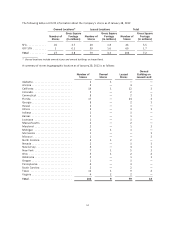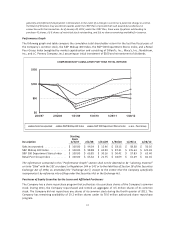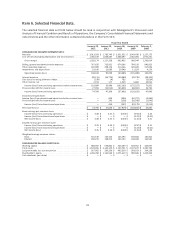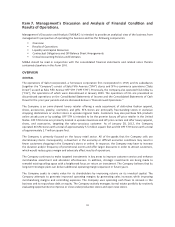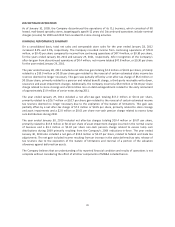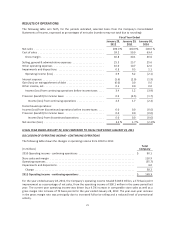Saks Fifth Avenue 2011 Annual Report Download - page 13
Download and view the complete annual report
Please find page 13 of the 2011 Saks Fifth Avenue annual report below. You can navigate through the pages in the report by either clicking on the pages listed below, or by using the keyword search tool below to find specific information within the annual report.If the Company does not have the ability to successfully upgrade, maintain and secure our information
systems to support the needs of the organization, it could have an adverse impact on the Company’s business.
The Company relies heavily on information systems to manage operations, including a full range of retail,
financial, sourcing and merchandising systems, and regularly makes investments to upgrade, enhance or
replace these systems. The reliability and capacity of information systems is critical. Despite the Company’s
preventative efforts, its systems are vulnerable from time to time to damage or interruption from, among other
things, security breaches, computer viruses, power outages and other technical malfunctions. Any disruptions
affecting the Company’s information systems, or any delays or difficulties in transitioning to new systems or in
integrating them with current systems, could have a material adverse impact on the Company’s business. In
addition, the Company’s ability to continue to operate its business without significant interruption in the event
of a disaster or other disruption depends in part on the ability of the Company’s information systems to operate
in accordance with its disaster recovery and business continuity plans.
In 2012, the Company will begin a substantial multi-year transformation of and investment in its foundational
merchandising, finance, and human resources systems. The Company has an orderly plan to transition its
existing legacy systems to the new systems. However, the Company could experience disruption in its
operations due to unexpected issues with employee hiring, retention, and training and installation of
equipment or software, among other things.
A privacy breach could adversely affect the Company’s business.
The protection of customer, employee, and company data is critical to the Company. The regulatory
environment and industry standards surrounding information security and privacy continue to evolve in
response to increased threats to information security. In addition, customers have a high expectation that the
Company will adequately protect their personal information. A significant breach of customer, employee, or
company data could damage the Company’s reputation and result in lost sales, fines, or litigation resulting in a
decrease in the Company’s earnings.
Ownership and leasing of significant amounts of real estate exposes the Company to possible liabilities and
losses.
A significant percentage of the Company’s SFA stores and one OFF 5TH store are owned. The remainder of the
Company’s SFA and OFF 5TH stores are leased. Accordingly, the Company is subject to all of the risks associated
with owning and leasing real estate. In particular, the value of the assets could decrease, and costs to operate
stores could increase, because of changes in the investment climate for real estate, demographic trends, and
supply or demand for the use of the store, which may result from competition from similar stores in the area, as
well as liability for environmental conditions.
Store leases generally require the Company to pay a fixed minimum rent and a variable amount based on a
percentage of annual sales at that location. The Company generally cannot terminate these leases. If a store is not
profitable, and the Company decides to close it, the Company may be committed to perform certain obligations
under the applicable lease including, among other things, paying rent for the balance of the applicable lease term. In
addition, as each of the leases expires, the Company may be unable to negotiate renewals, either on commercially
acceptable terms or at all, which could cause the Company to close stores in desirable locations.
If an existing owned store is not profitable, and the Company decides to close it, the Company may be required
to record an impairment charge and/or exit costs associated with the disposal of the store.
In addition, the Company may not be able to close an unprofitable owned or leased store due to an existing
operating covenant which may cause the Company to operate the location at a loss which could result in an
impairment charge.
Item 1B. Unresolved Staff Comments.
None.
11


